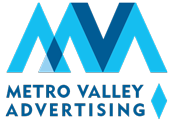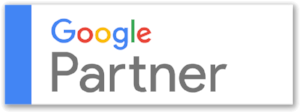If you watch as seasoned fisherman, you realize they don’t throw their line anywhere and they don’t come out to fish at just any time. They know that fish bite at specific times in specific place. Advertising is the same, when your message runs can be just as important as what it says. Experienced media buyers know that dayparting TV and Radio Buys for maximum impact means placing your ads when and where the audience is most receptive and likely to take action.
Many campaigns with strong creative still underperform. Why? Because they overlook timing. If you’re not aligning your media buys with when your audience is most likely to take action, you’re not making the most of your spend. That’s where dayparting comes in, a tool every serious marketer should use.
At its core, dayparting is a simple strategy. It means placing your TV or radio ads in specific time blocks during the day to match the habits of your audience. But the execution can be nuanced. The right daypart can drive better results, higher call volume, and stronger lead quality. The wrong one can waste impressions and budget.
When your goal is lead generation, dayparting becomes even more critical. The media landscape is fragmented, attention is short, and response windows are narrow. To cut through, your campaign needs precision—not just in targeting, but in timing.
What Is Dayparting?
Dayparting breaks the broadcast day into time blocks. These dayparts reflect how people consume content throughout the day, both on TV and radio. Each comes with different audience behaviors, pricing, and performance characteristics.
In radio, the day is typically divided into:
- Morning Drive (6–10 AM)
- Midday (10 AM–3 PM)
- Afternoon Drive (3–7 PM)
- Evening (7 PM–12 AM)
- Overnight (12–6 AM)
TV follows a similar structure, with some variations:
- Early Morning (5–9 AM)
- Daytime (9 AM–4 PM)
- Early Fringe (4–7 PM)
- Prime Time (8–11 PM)
- Late Night/Fringe (11 PM–1 AM)
- Overnight (2a–5 AM)
Advertisers use dayparting to line up their message with audience availability and mindset. Some times of day are ideal for branding. Others work better for driving calls or web traffic. Understanding this helps marketers avoid overspending on reach while missing conversions.
Dayparting in Radio Advertising
Radio offers one of the most flexible and cost-efficient environments for dayparting. It’s local, mobile, and reaches people in real-time environments—commuting, working, or shopping.
Drive times, both morning and afternoon, carry the highest rates. That’s because they reach the largest captive audience. And big brands covet those time slots. However, if your campaign focuses on intake rather than brand awareness, midday may offer stronger value. Midday listeners often engage longer and face less clutter, which creates a more receptive environment for your message. And the ratings are often as good as Drive time.
Advertising agencies that specialize in lead generation often build radio plans around these midday blocks. The CPMs are lower, the competition is lighter, and repetition is easier to afford. That matters when you’re trying to stay top of mind throughout the day. We’ve seen personal injury firms boost call volume simply by shifting frequency into midday schedules.
For example, one PI firm we worked with had a heavy morning drive schedule but struggled to convert. After shifting 40% of their budget into 10 AM to 2 PM, their intake volume rose by 23%—without increasing total spend. Timing made the difference.
Dayparting in TV Advertising
TV may feel less immediate than radio, but it still delivers impact when timed right. Prime time remains the highest-cost block. It reaches a broad audience and comes with prestige—but that doesn’t always translate to leads. Prime time viewers are looking for escapism, not active engagement.
In fact, for law firms and other service-based advertisers, daytime TV often performs better. It reaches people at home, retired, disabled, or recovering from injuries. These are likely viewers for PI firms. They’re also more likely to respond to a legal message during these hours.
While media buyers often push for prime time, smart agencies focus on when people take action, not just when they’re watching. Our team has placed numerous daytime schedules for law firms and seen consistent, measurable lifts in call volume and lead quality.
One firm moved the bulk of its media to air between 9 AM and 3 PM. With tracking numbers and landing pages tied to those dayparts, we saw a 35% drop in cost per lead compared to their previous evening-heavy schedule.
How Dayparting Affects CPM and Performance
Costs per thousand impressions (CPMs) change dramatically across dayparts. Prime time and drive time offer premium reach, so they command premium pricing. However, lower-cost dayparts often deliver better results when optimized correctly.
The key lies in the tradeoff: Reach vs. responsiveness. If you’re building awareness, high-reach dayparts make sense. But if your campaign goal is leads, don’t assume a higher CPM means better performance.
Some of the best-performing campaigns we’ve run used off-peak hours. Why? Because fewer advertisers compete for those slots, meaning your message has room to land. Also, media vendors are often more flexible during these times, giving your agency more room to negotiate.
A balanced mix works best. Use peak hours for awareness, then lean into lower-cost dayparts for intake. That mix brings down your average CPM and improves conversion efficiency.
Matching Dayparts to Audience Behavior
Timing only works if it aligns with how your audience behaves. When are they watching? When are they listening? More importantly, when are they ready to act?
Use call center logs, CRM timestamps, and form submission data to find your “intake windows.” You might find that your ideal clients call between 10 AM and 1 PM. Or that web form fills spike in early evening hours. Once you know that, schedule your ads accordingly.
Too many advertisers guess. Or worse, they let vendors fill time without considering behavior. A smart media strategy puts real data behind scheduling.
We’ve helped businesses do just that, reallocating spend to match when prospects are most likely to call or click. It doesn’t just improve performance. It builds a tighter connection between your media strategy and your business goals.
Measuring and Optimizing Your Daypart Strategy
Once your campaign is live, track it by daypart. Use call tracking numbers, custom URLs, and analytics tools to tie response to specific time blocks.
Run A/B tests. Try running the same creative across two dayparts, then measure which drives more leads. If you’re using radio, rotate your schedule weekly and watch the intake shifts. For TV, test different mixes of daytime and fringe placements.
If a certain daypart underperforms, shift your dollars. The goal is constant refinement—optimizing each dollar toward the highest lead yield.
Dayparting Tips from a Media Buyer
Here’s what 20 years in the field has taught me:
Don’t overspend on prime time unless brand awareness is your main goal. If you’re trying to drive calls, off-peak hours can surprise you. Test them regularly.
Also, frequency wins. A single high-profile ad can get lost. But several well-timed spots create familiarity and trust.
And finally, lean on an experienced advertising agency to help navigate rate structures and inventory. The right agency will stretch your budget further by understanding how timing and targeting work together.
Dayparting TV and Radio Buys for Maximum Impact
You’ve crafted the right message. Now you need to place it at the right time.
Advertising isn’t just about buying space, it’s about attracting attention. And attention depends on timing.
If you’re spending to generate leads, your media plan needs to reflect that. Dayparting helps your campaign align with behavior, action, and results. Take another look at your plan. Ask yourself: Am I running when my audience is ready to respond? Am I dayparting TV and Radio Buys for maximum impact?
If not, it’s time to adjust. Because when timing meets your market, advertising works harder and smarter.



